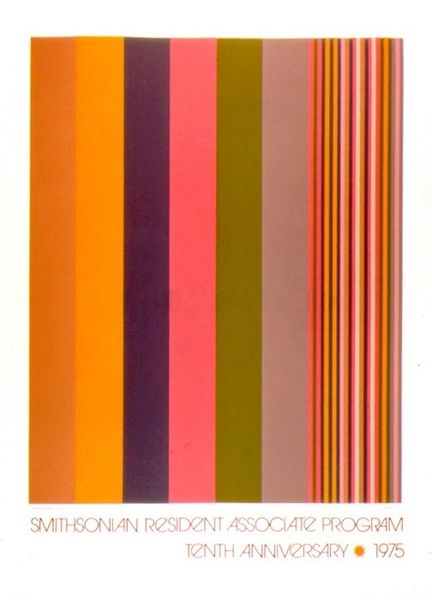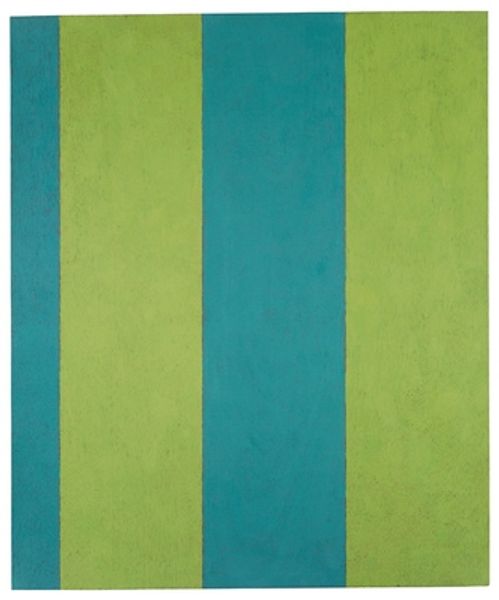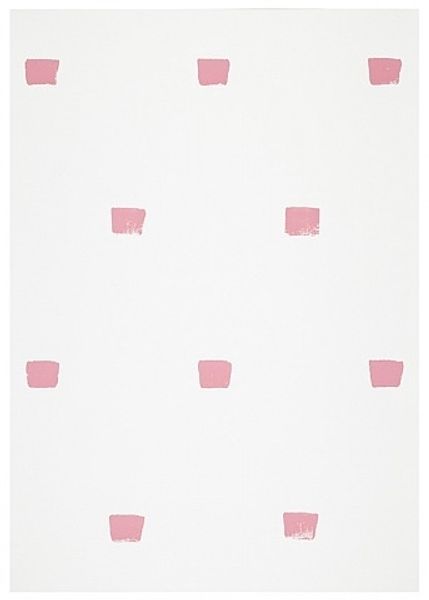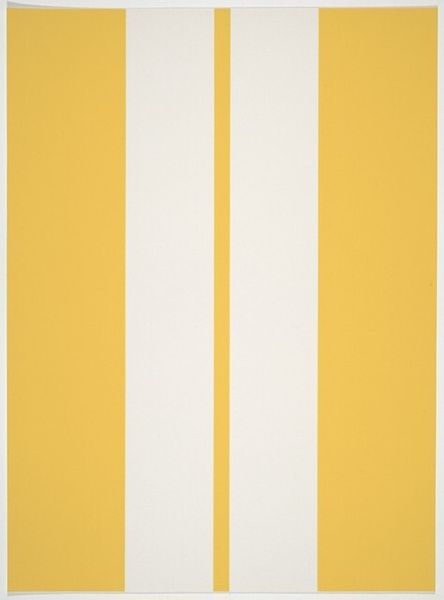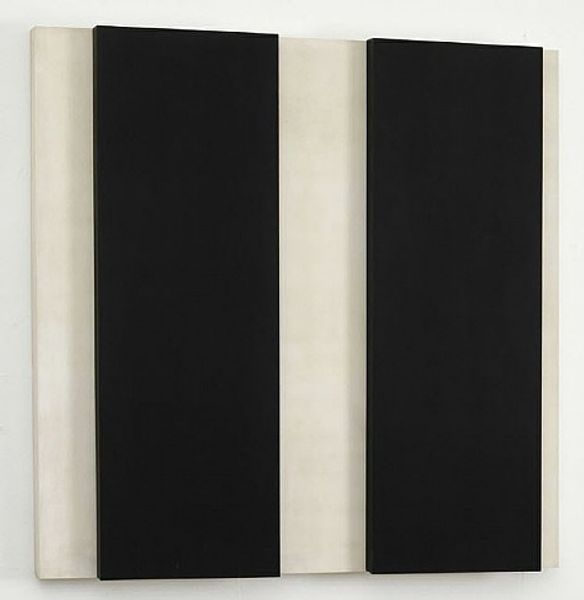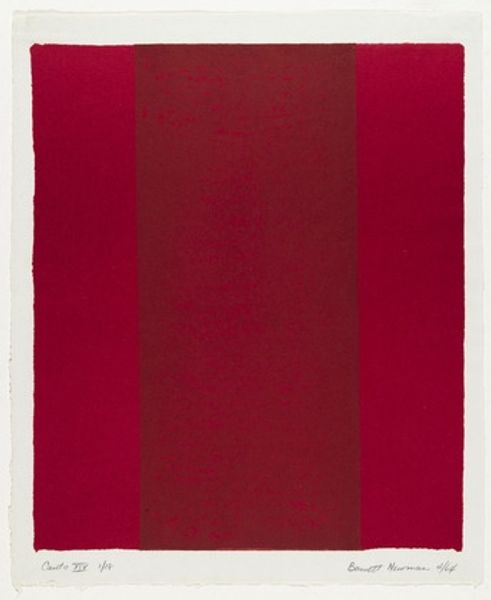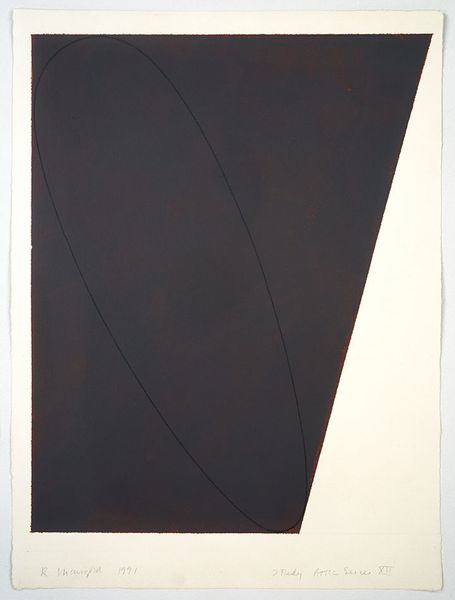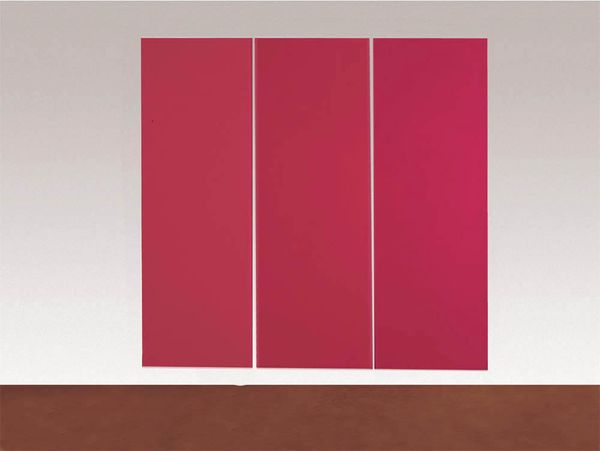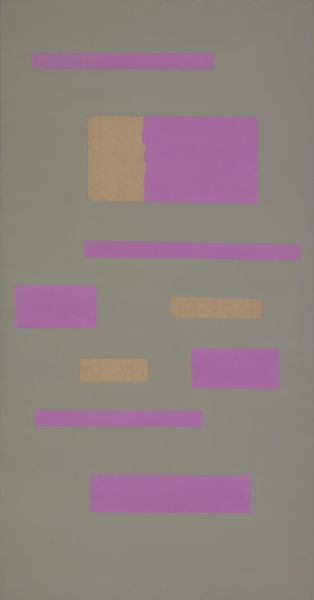
acrylic-paint
#
abstract-expressionism
#
non-objective-art
#
minimalism
#
op art
#
acrylic-paint
#
geometric pattern
#
abstract pattern
#
rectangle
#
minimal pattern
#
geometric
#
geometric-abstraction
#
vertical pattern
#
hard-edge-painting
Copyright: Doug Ohlson,Fair Use
Editor: Here we have Doug Ohlson’s "Slip" from 1967, rendered in acrylic paint. The composition has four vertical bars, mostly brown, but with these almost playful pink squares on some of them. It's quite simple, almost meditative, yet something about the pink squares feels slightly… off-kilter. What's your interpretation? Curator: What strikes me is the work’s dialogue with its historical moment. Think about the late 1960s. Minimalism sought to strip away the excess, reflecting a desire to question established power structures. But it’s important to also ask, who got to participate in that stripping away? "Slip," with its repetitive forms, does feel aligned with minimalist ideals, but those strategically placed, vibrant squares disrupt the expected uniformity. Editor: So, you see those squares as… disruptive? Like a commentary? Curator: Potentially. Think about color theory; that pink really pops against the brown. Consider also the social upheavals happening concurrently – the Civil Rights movement, second-wave feminism, anti-war protests. Does that subtle 'slip,' as the title suggests, become a quiet rebellion against the rigid structures of the time? How does the off-center placement of those color fields impact our reading of the whole? Is it breaking free? Editor: That's fascinating. I was just seeing them as simple shapes, but the historical context really shifts things. It almost feels like a coded message, then. Curator: Art is often a conversation, not just between the artist and the canvas, but between the artwork and its cultural environment. Ohlson, through a minimalist vocabulary, may be subtly nodding towards those conversations. It’s important to engage in critical dialogue with what is in front of you. Editor: I’ll definitely keep that in mind—it’s more than just the aesthetic experience. There’s so much more to unpack. Curator: Exactly. And isn’t that what makes art so powerful? There's always another layer to discover.
Comments
No comments
Be the first to comment and join the conversation on the ultimate creative platform.
